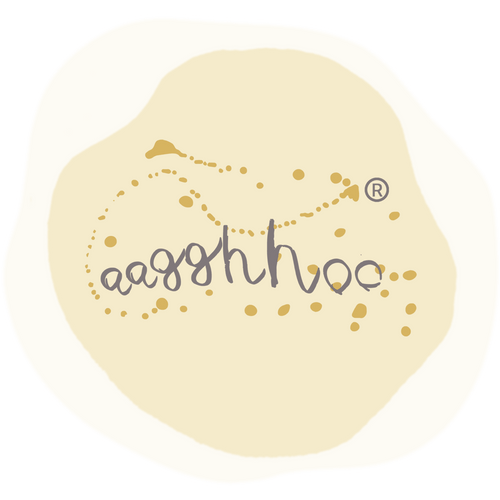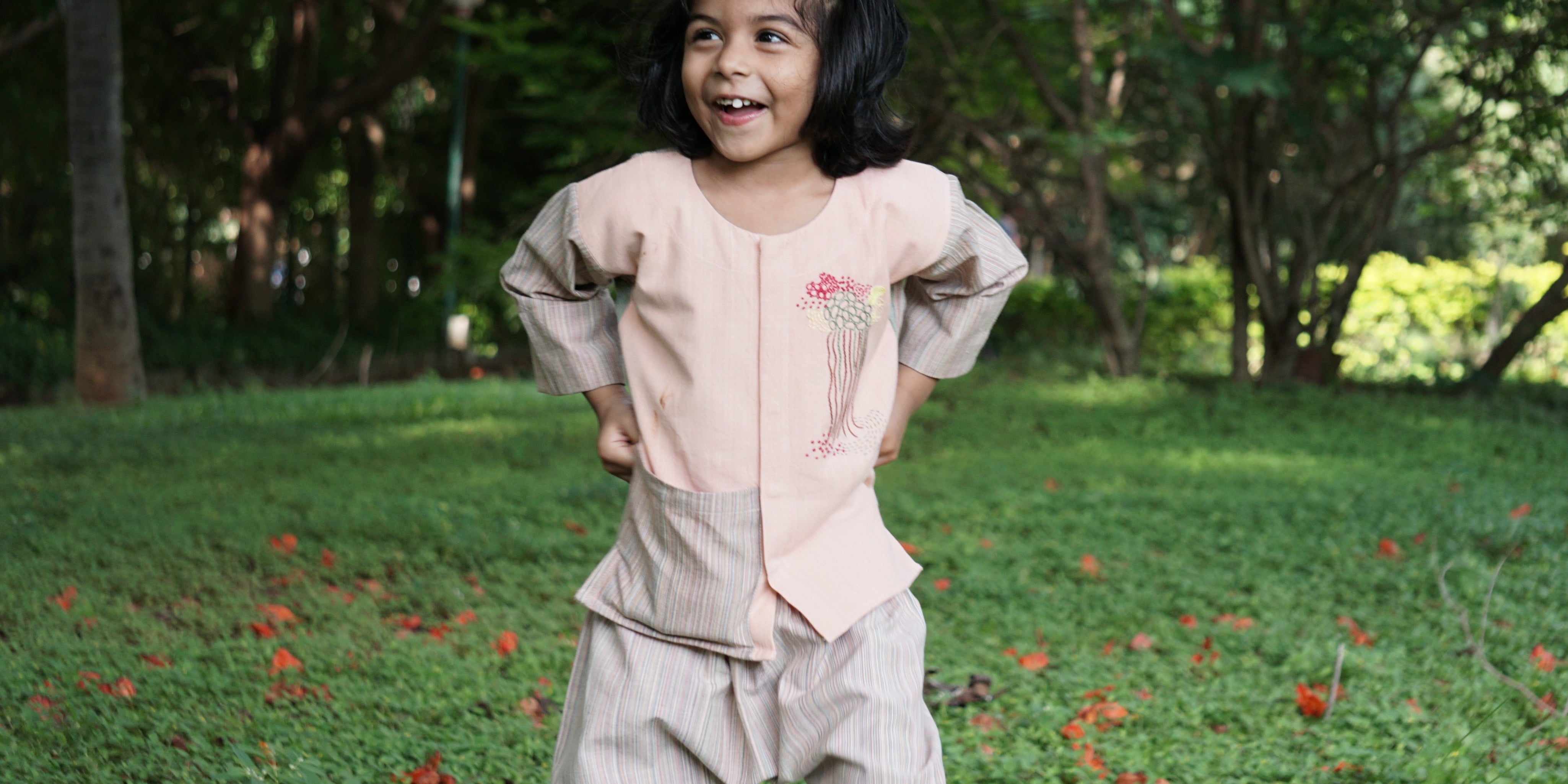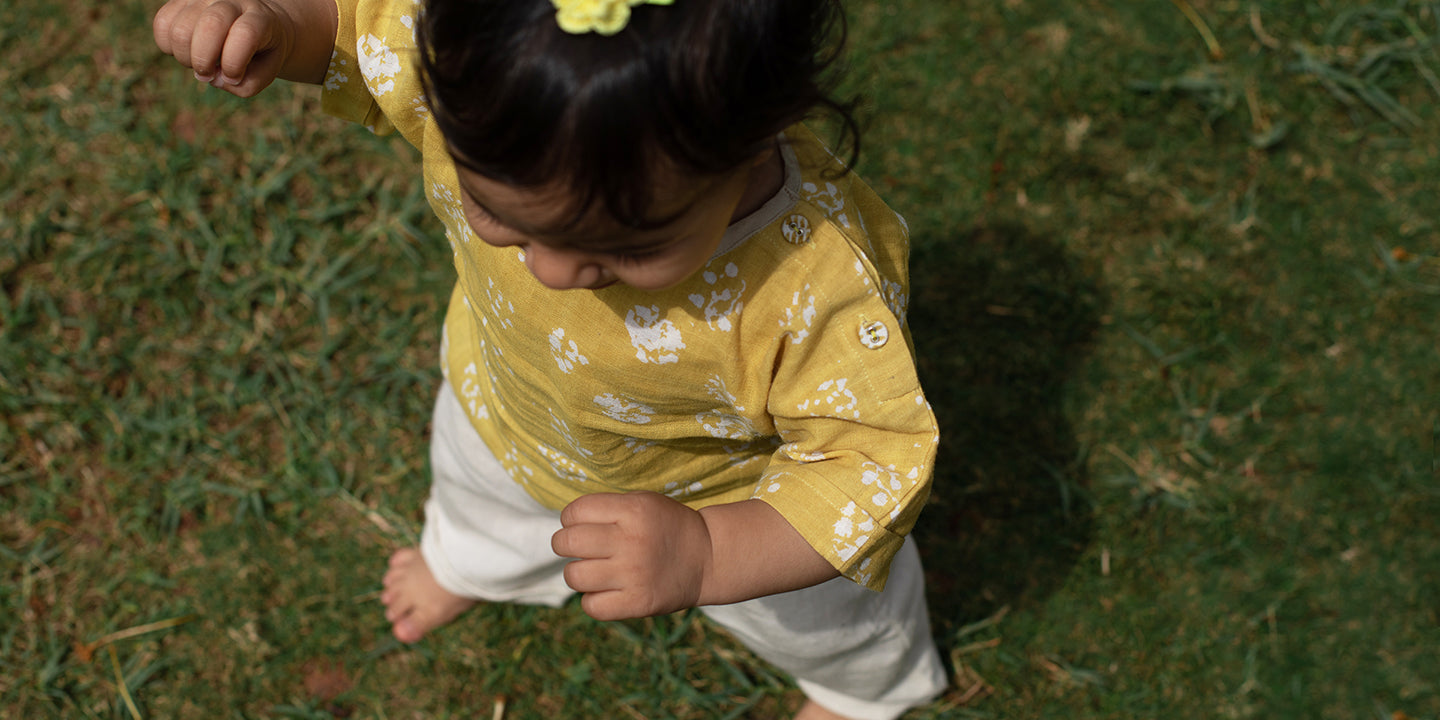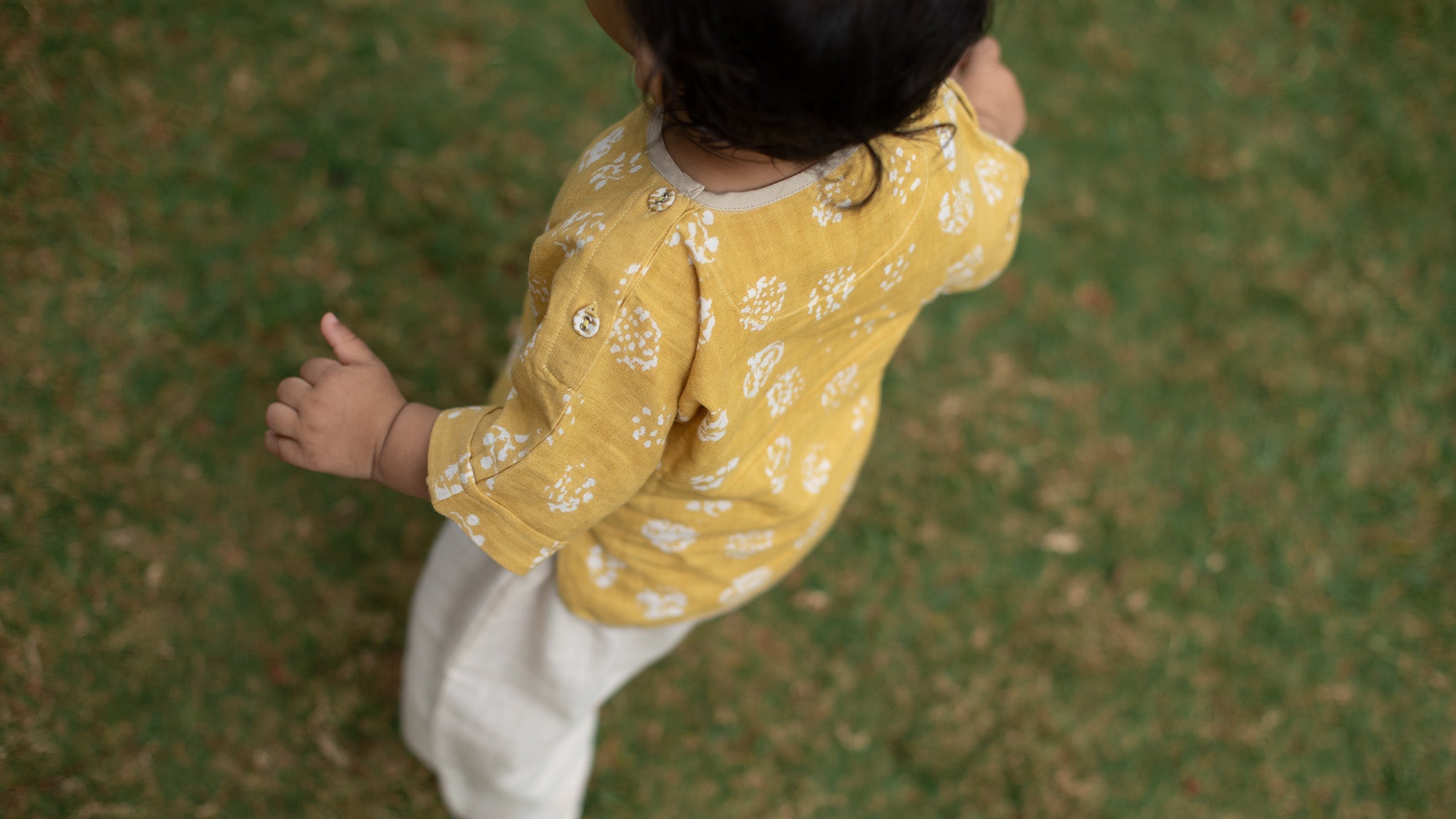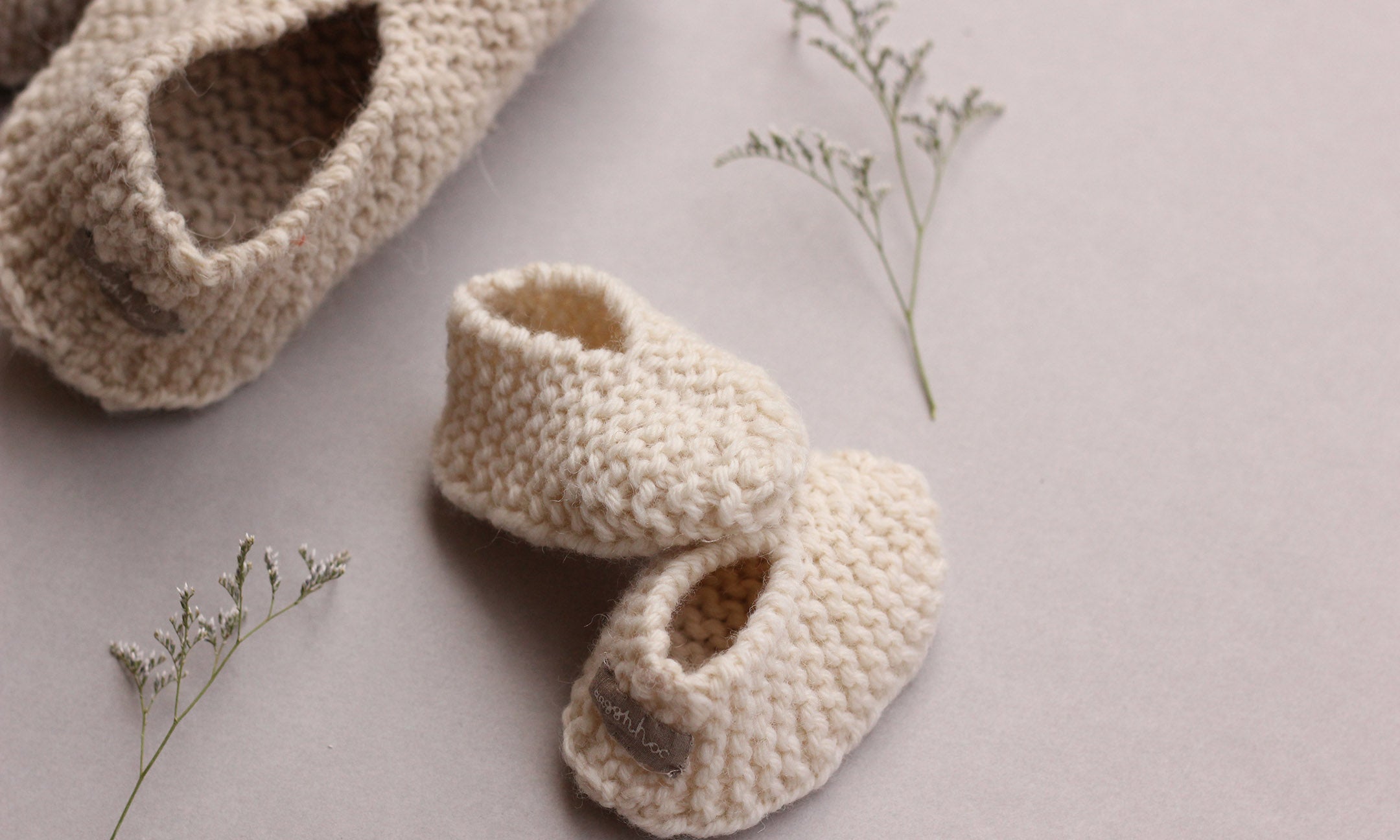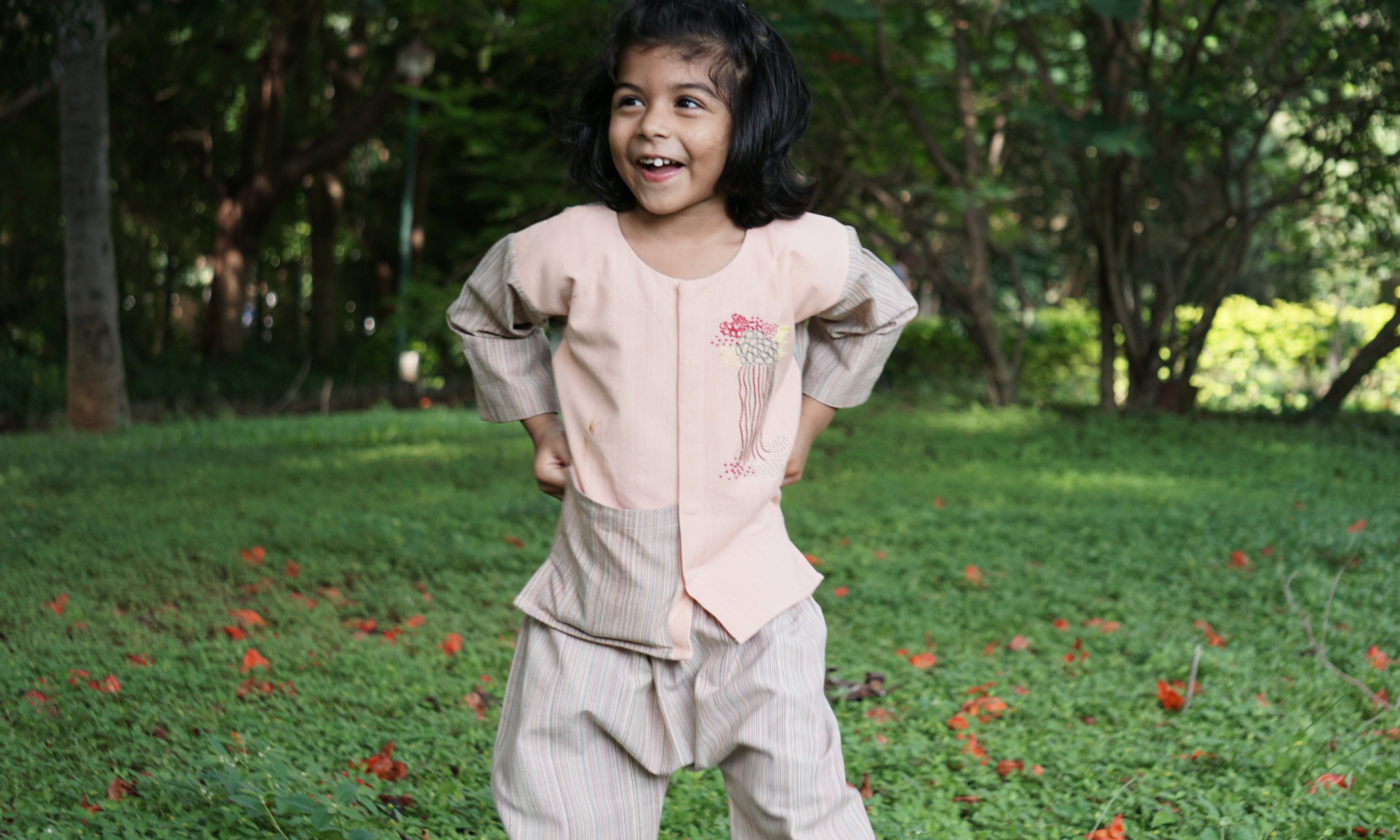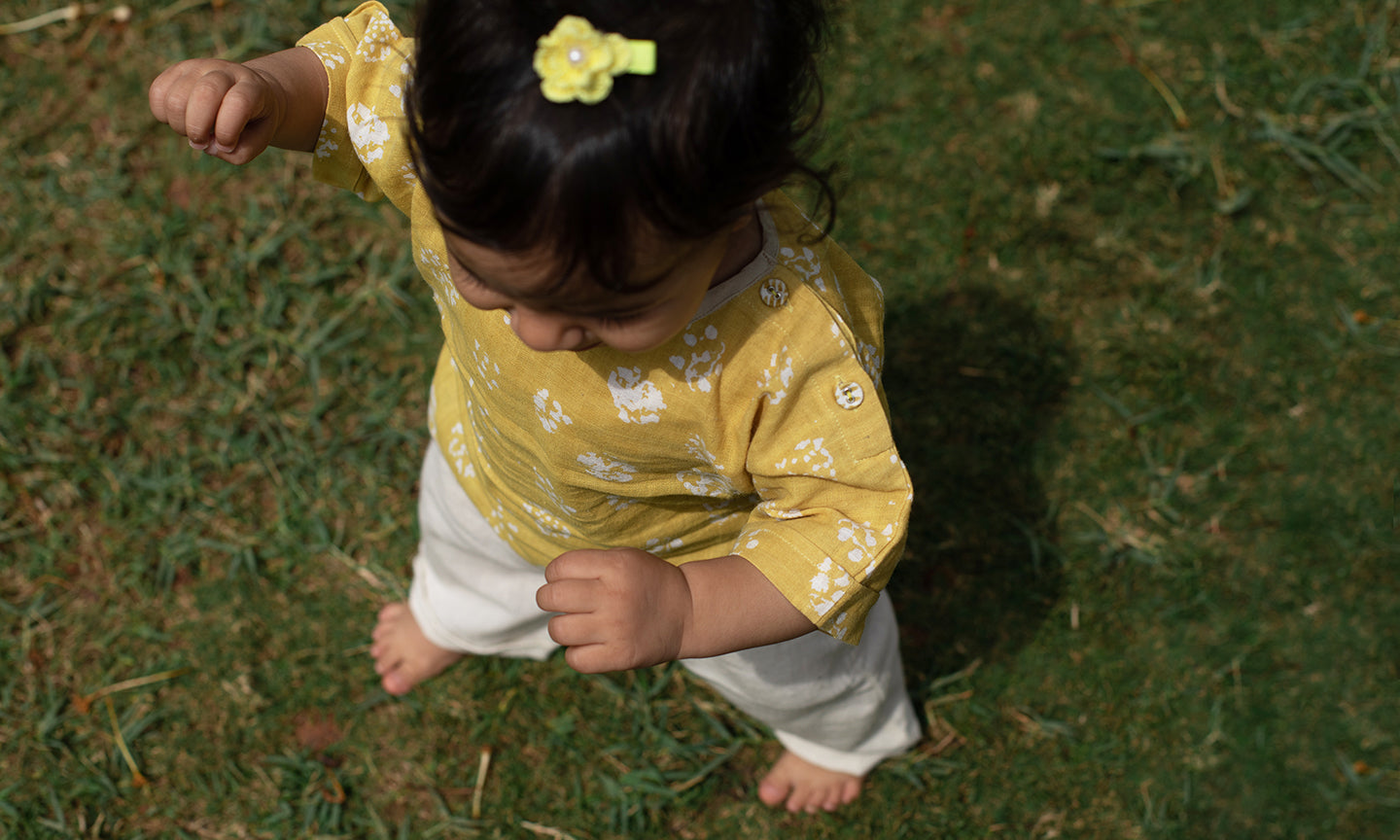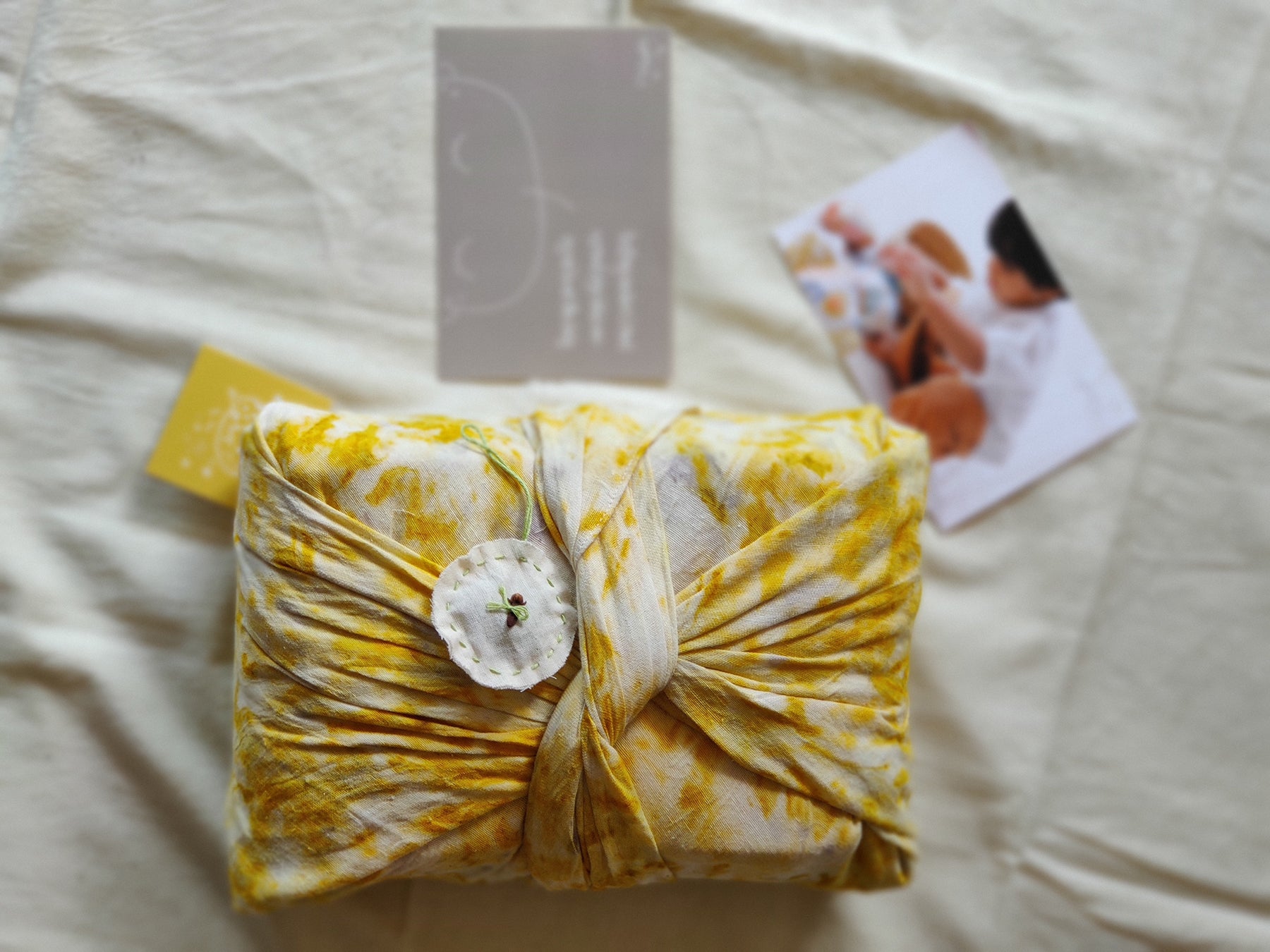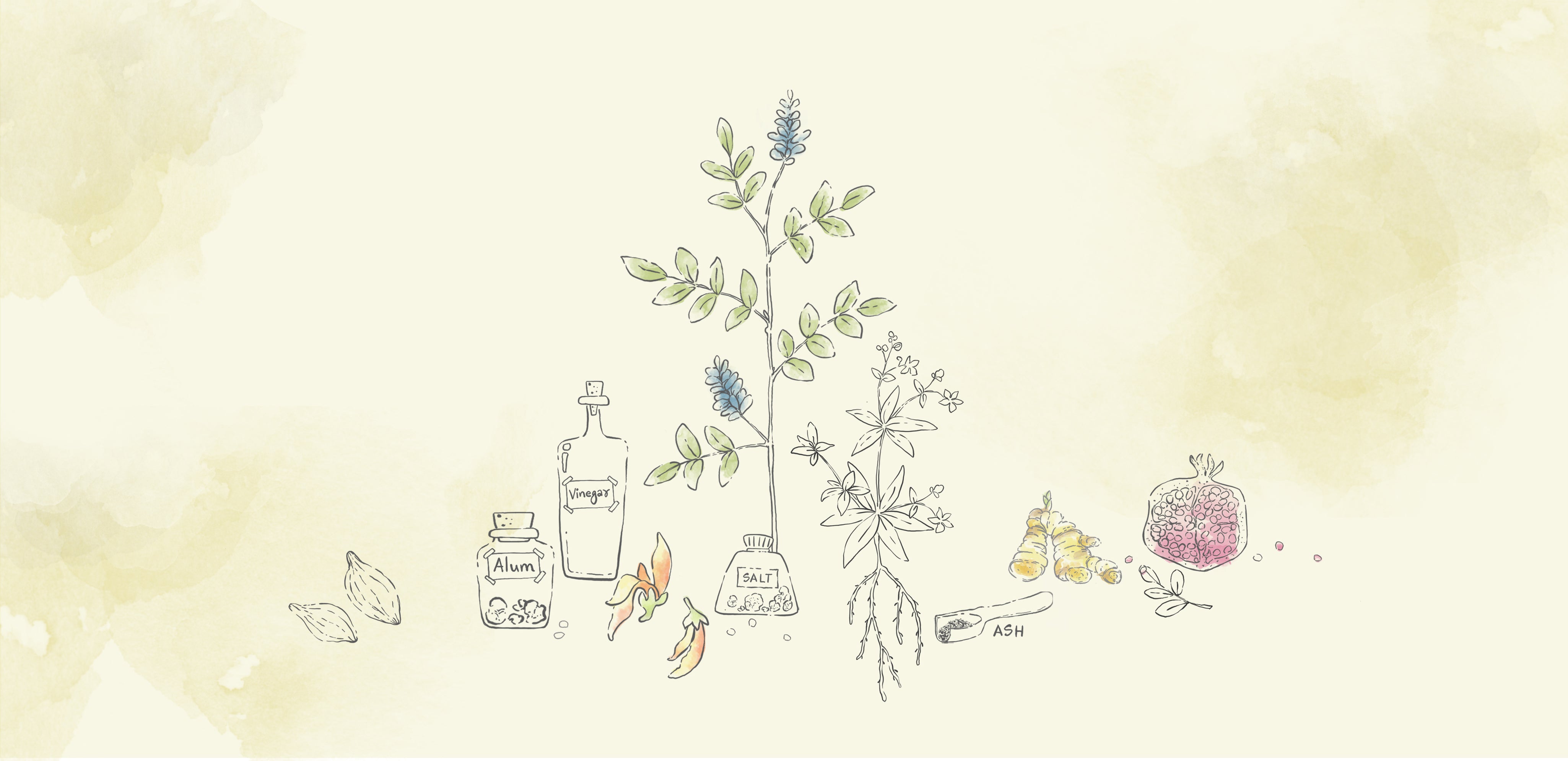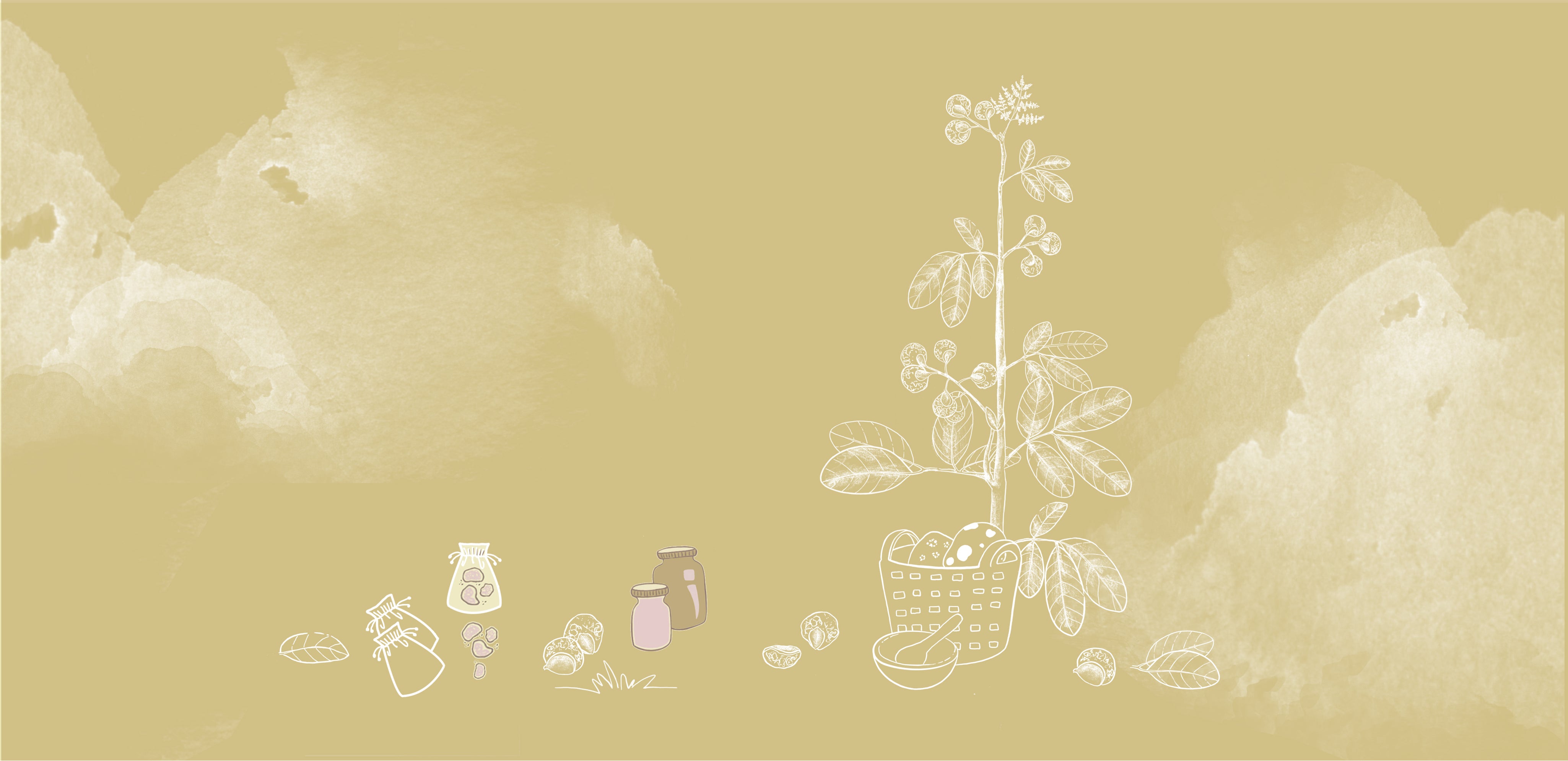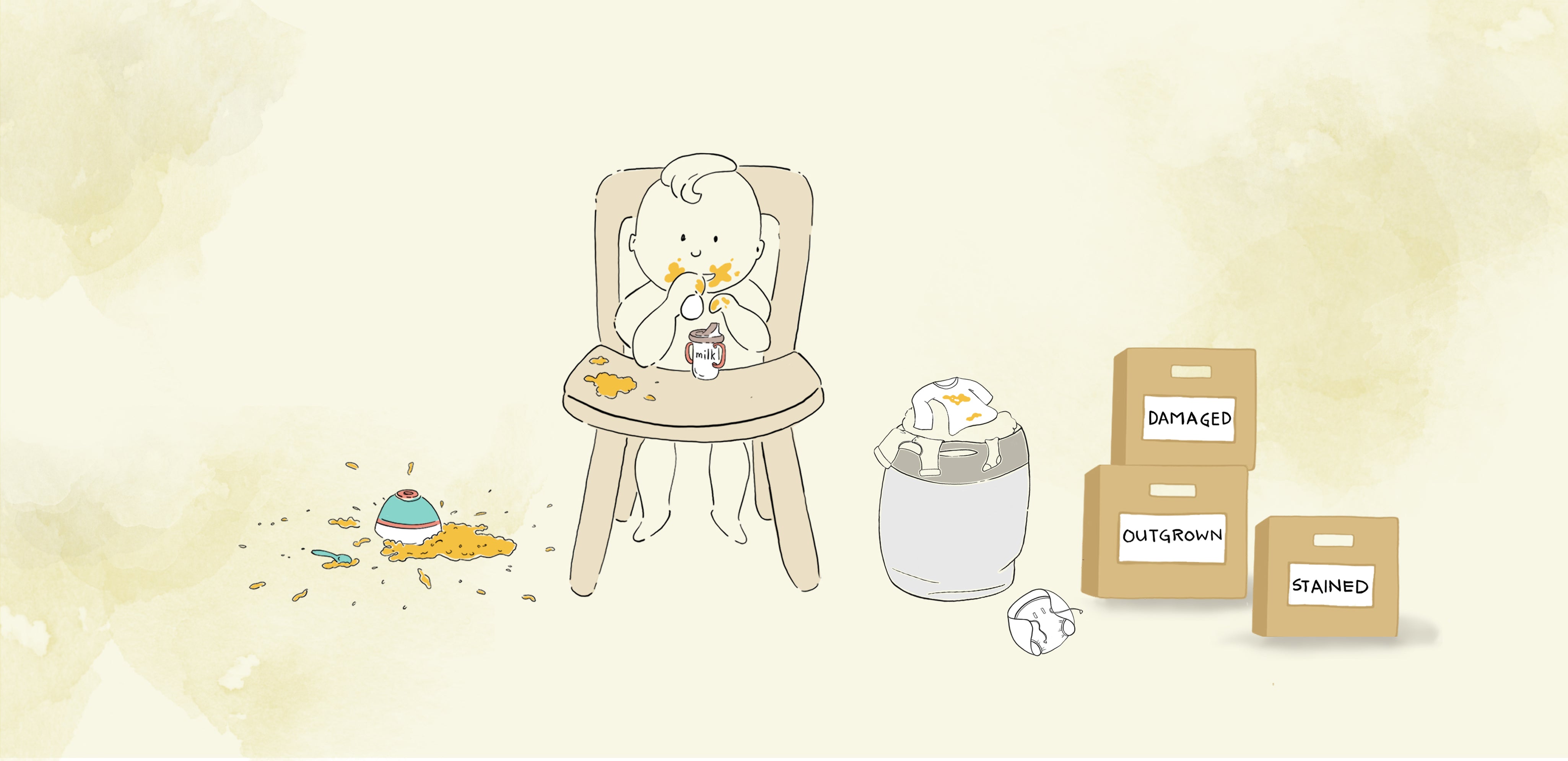
Natural colours are special for many reasons, especially for children. They are non-toxic, gentle, safe, healing, medicinal and healthy in every possible way. Children can form the most beautiful of connections with nature while growing up. A simple experience of wearing natural dyed clothes, using natural linen to sleep, playing with toys made with natural textures can become an integral part of their childhood memory. The sensorial experience is learning for life.
Simple “green” practices will make children more adaptable for the future. Natural colour dyeing is a regenerative practice that is certainly future centric and helps us live a simple, pure, gentle and a non-toxic life.

Wellness benefits that are tried and tested is Ayurveda is what we imbibe in our brand value system. There are artisan communities involved with ancient dyeing practices, where nutrients of the earth are extracted in the form of herbal dyes and the remains go back safely through water to nourish the soil.

Colour Sources
Each recipe is unique and well crafted over many years. As a studio collaboration, we work very closely with natural colour experts based in India who have been practicing the craft for a really long time. From research knowledge, source, crafting recipes, teaching, re-using water - everything has been an integral part of their ecosystem. We are proud to work with such colour practitioners who are trying to balance everything through their environmentally ethical practices.
“We take pride in our practice of recycling the solid as well as liquid waste. This not only allows us to be the producers of fabric that is completely Eco-friendly, but also makes our process a reflection of our belief,” says Arun Baid of TRUE TONE INC. he tags this colour range as herbal colours as its 100% plant based.
He explains further, “We try our best to use only that part of the plant which is considered a waste or is growing wild and organic in nature and has medicinal properties, such as the peels of pomegranate, onion peels, myrobalan (Harada). This material is rich in dyeing properties and ensures that the plant is productively used in its entirety. We make our process completely non-violent by not using any ingredients that might harm the environment or any animal.
Once the correct part of the plant is collected for the purpose of dyeing, it is dried in the sun for days before its made into a powder form. After the various powders are created we bring them to our laboratory and create a proportionate blend of herbs and natural mordants in measured quantities that can derive specific shades. This can be in liquid or powder forms. They are now ready to be used in the textile industry. We dye yarns and fabrics and carry our screen printing and block printing processes using our own herbal dyes.
Accepting natural shade variations
Each natural colour tone is unique and inimitable.
The same recipe can give different outputs at different points that are beyond human control. This happens as sometimes colour/dye source grows in different soil, air, water conditions. So next time when you look at two pieces of the same style but notice a colour variation, consider it nature’s way of saying - each one of us is unique and beautiful.
Graceful Colour Ageing
We feel it's beautiful to live with colours that react with natural elements like air and water like how we do. Its definitely more kinder as the natural dyed fabric breathes like how we breathe and ages like how we age. So what defines the premiumness for you? To have access to kinder products or toxic, bright dyes for your baby?
Sensitivity towards natural colours
When we look around our homes, we can clearly distinguish between natural and unnatural colours. What defines safety for your baby? To be able to access earth colours or bright products with unnatural materials and colours?
